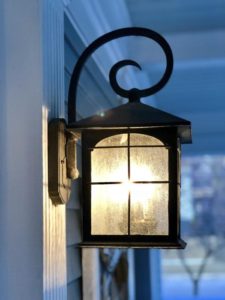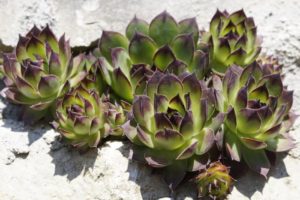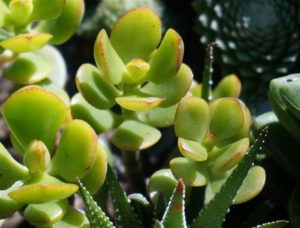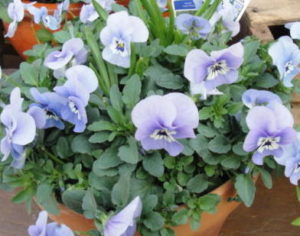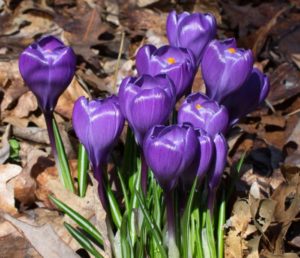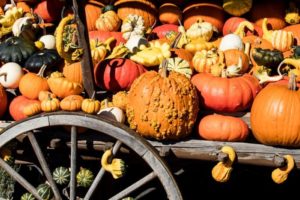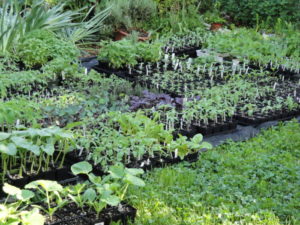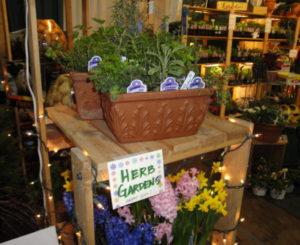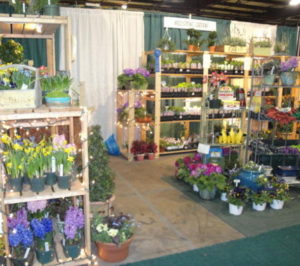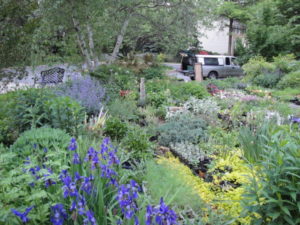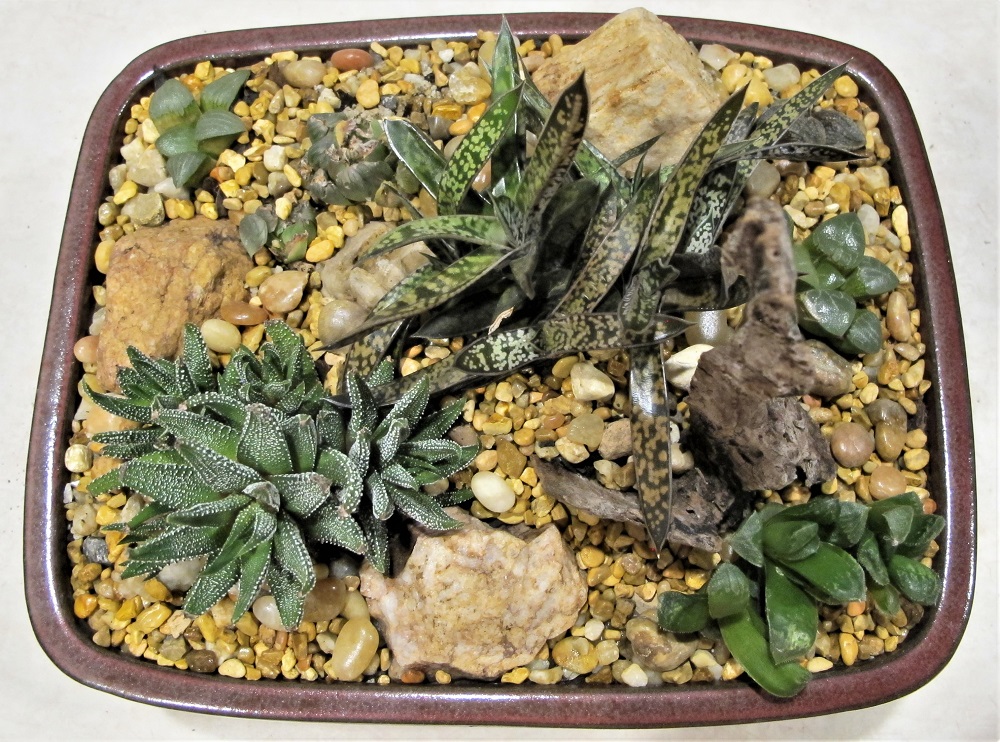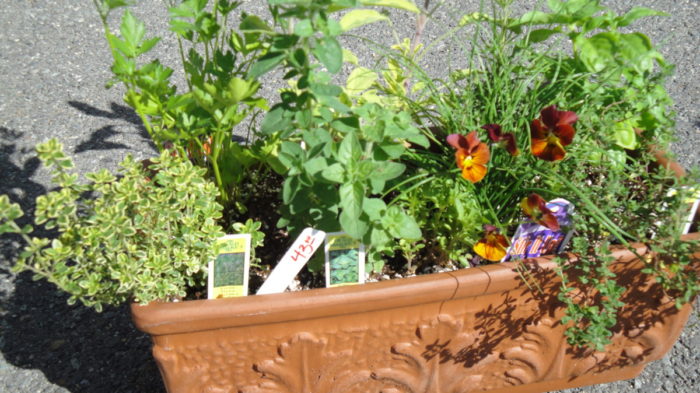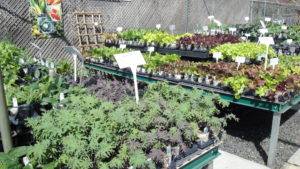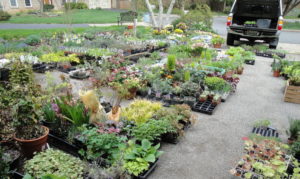Halloween Is Coming Up
I’d like to relate the story of a 29-year tradition that took root in our family. But first, some background.
After leaving Morgantown, West Virginia, we purchased our first home in Monrovia, Maryland. The first order of business was to build a greenhouse for the vegetable transplants, succulents, and other houseplants that I sold to florists and garden centers, and at the occasional plant sale held in the front yard. This was several years before the phenomenal rise in popularity of the farmers’ markets.
Fast-forward a few years to September, 1984, and we were on the move again, this time to a smaller property in Rockville MD, 30 minutes south. All the light fixtures and other horticultural paraphernalia came with us…along with our young daughter, Brynn, and our first Rhodesian ridgeback, Aureus.
The plants…hundreds of them!…found temporary quarters in every window or in the back yard, until the dozen or so 4′ fluorescent light fixtures were set up in the basement. But I didn’t need all the duplicate plants for the business at this time of the year, and they could easily be propagated if I did.
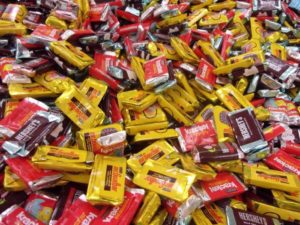
Returning home with bags of little Butterfingers, Mars bars, Nestle crunch, and Smarties, I had a lightbulb moment.
What if we offered plants to the trick-or-treaters?
My husband, at the time, said, “That’s un-American.” But I wasn’t going to stop offering candy altogether. I intended to give trick-or-treaters a choice!
Despite doubts, I went ahead with the plan. A folding table under the porch lights held a few flats of small thornless succulents (like those in the photo, below), spider plants, and Moses-in-the-boat (Rhoeo spathacea) in 2″ or 3″ pots. White rope secured to the shrubs guided the trick-or-treaters along the sidewalk to the front door, and prevented shortcuts through the garden.
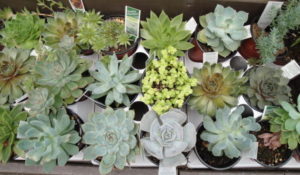
Spooky noises from a tape cassette echoed around the foyer, as glow-in-the-dark spiders crawled all over my t-shirt. And the great plastic pumpkin brimming with treats sat inside, on a bench by the door. Brynn went out trick-or-treating with her Dad; a few years later, her brother, Logan, would join them. Okay, we’re all set.
The First Knock on the Door
In our neighborhood, trick-or-treating took place during the early evening hours, and participating homes kept their porch lights on. Parents accompanied their young children, or they waited nearby at the curb.
I greeted our first visitors, and followed up with “Would you like a plant or candy?” I think I detected some quizzical remarks under their masks and make-up. After giving a succinct explanation to Snow White, a pair of dice, and a foil-covered cardboard robot, important decisions were about to be made.
“Can we have both?”
“No, you have to choose one or the other. You can have candy, which is gone in a few minutes, or a plant, which can last for years. It’s entirely up to you.”
It often happened that when the first of a group of trick-or-treaters chose a plant, then, like a contagion, the rest of the group followed suit.
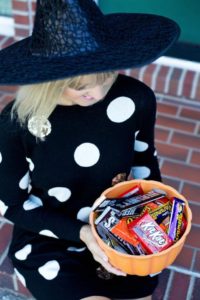 Once in a while, the young ones would have a change of heart, and I happily accommodated. It’s never too early to teach kids how to make a decision, but I didn’t want them to go away disappointed…not on Halloween!
Once in a while, the young ones would have a change of heart, and I happily accommodated. It’s never too early to teach kids how to make a decision, but I didn’t want them to go away disappointed…not on Halloween!
The middle-school-aged kids and the few high-schoolers often chose the plants, and were surprisingly fascinated by this new twist on trick-or-treating.
They paused while I gave more detailed instructions for care, and even asked the names of the plants. So, I found small white labels and a Sharpie pen, and wrote common and botanical names for each of the plants.
There’s Always One
 Tiny fingers gingerly grasped their bounty. I saved small bags and newspaper for the occasion, but most were content to carry the pots. They excitedly passed them to their parents, who responded with “Thanks! What a great idea!” I was thrilled that they were thrilled.
Tiny fingers gingerly grasped their bounty. I saved small bags and newspaper for the occasion, but most were content to carry the pots. They excitedly passed them to their parents, who responded with “Thanks! What a great idea!” I was thrilled that they were thrilled.
About 15 years into this tradition, a young boy started coming. His father remained at the curb, chatting with friends and neighbors. When he realized what was going on, the father shouted toward his son, “Take the candy. Take the candy!”
The cute little boy handed back the plant he had chosen, and took a couple of chocolate bars instead. In this instance, I was willing to make an exception. He was the only trick-or-treater allowed to take both a plant and candy, and usually traveled alone, so I didn’t have to explain anything to his friends. This happened for a few years, and always played out the same way: “Take the candy!”
A Wider Web
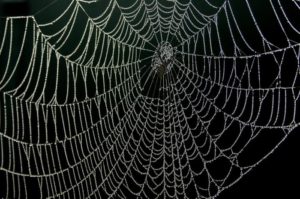
The morning after the first Halloween, I took my daughter and the dog for a walk around the neighborhood. I noticed a green pot in the gutter, and a plant not far away in the middle of our neighbor’s lawn. That was one of mine!
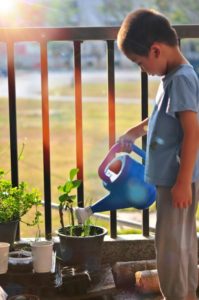 Then we saw two more down the block in someone’s front yard. After gathering the bits and pieces, I had to decide whether to continue doing this in the future.
Then we saw two more down the block in someone’s front yard. After gathering the bits and pieces, I had to decide whether to continue doing this in the future.
Hmmm… Actually, this was a no-brainer. Only a handful of plants were discarded, but dozens were given away! And to miss out on the opportunity to introduce young people to the world of plants? No way!
As the years went by, hippies, clowns, and Frankenstein monsters said they had given their plants to Grandma or to favorite teachers. Some kept their spider plants and philodendrons for 5, 6, or 7 years, and some told me that their hens-and-chicks (the hardy succulent, Sempervivum) were spreading all over the garden.
Several mentioned that they had used the story of the “Halloween Plant Lady” as a subject for classroom assignments. I had no idea this little tradition would have such an effect, and for 29 years, trick-or-treaters continued to surprise me.
Second Generation of Trick-Or-Treaters
And then I began to hear tales from our Halloween visitors that their Moms or Dads used to come to the Plant Lady’s house! The parents, former trick-or-treaters, parked their cars down the block and sent their kids up to the end of the cul-de-sac for their own plants!
This tradition lasted until 2013, when I moved to North Carolina. But I will do it again, some day. (***Update***: I did move to a rural town in NC, but, alas…no trick-or-treaters. 12/16/21)
Plants for Trick-Or-Treaters
Houseplants and Houseleeks
As more children were born into the neighborhood, and into the one across Shady Grove Road, more trick-or-treaters showed up. We used to chuckle about something being in the water… Some years we had only 15 or 20 kids coming to the door, but in its heyday, Halloween brought well over 100 visitors for their treats.
The older children, middle- and high-schoolers, were more inclined to take a plant than the youngest visitors. Some told me they chose plants every year. Over the 29-year period of time, between half and two-thirds of the trick-or-treaters chose plants! Incredible!
Since I was in the business of propagating and selling plants, with a little forethought, it was easy to come up with enough material. Plants that propagated quickly:
- wandering Jew (Tradescantia)
- spider plant (Chlorophytum)
- Moses-in-the-boat (Rhoeo)
- Swedish ivy (Plectranthus)
These took a little longer to root:
- jade plant (Crassula, photo, right)
- miniature Kalanchoe
- Philodendron
- Pothos (Epipremnum)
- dwarf snake plant (formerly Sansevieria, renamed Dracaena)
- Hens-and-chicks, also called houseleeks (hardy perennials and always popular)
When I began selling plants at farmers’ markets in 1988, I added herbs and other edibles to the Halloween table. The mere mention of “pizza!” got them interested in oregano. And dinosaur kale—kale!—was chosen by some. Parsley and thyme were more favorites, and young basil plants (indoors in warm sun) were given away only on warm Halloween evenings.
Flowering Plants
I grew violas (smaller cousins of the pansy) in market packs, and cut them into single-plant sections. Our trick-or-treaters loved the idea of using the flowers in a salad. The plants were especially bright and colorful, and grew well in the cool weather. These biennials were planted outdoors in autumn, went dormant or semi-dormant in winter, and re-emerged in spring.
For March and April home and garden shows, I forced hundreds of pots of spring-flowering bulbs. They were potted up in autumn, and rooted during cool to cold weather, blooming in the spring.
So, I bagged up a few bulbs (Crocus, Puschkinia, Muscari, and the more expensive miniature daffodil ‘Tête-à-Tête’) for the more adventurous, or patient, trick-or-treaters. They loved the fact that these perennial bulbs would come back year after year. (Like they did.)
For the last Halloween in Maryland, in an effort to clean up the yard in preparation for selling the house, I gave away potted perennials, such as Hosta, Helleborus (Lenten rose), Sedum, and seedling Japanese maples. I have every reason to believe that some of those plants are still thriving in our trick-or-treaters’ gardens, or maybe in their parent’s gardens.
So, is it time to start a new tradition in your family?
Gardeners out there might give it a go, or maybe you have something else to offer trick-or-treaters in your neighborhood.
Time for me to fire up the old broom and get some flats of violas for the winter garden.

